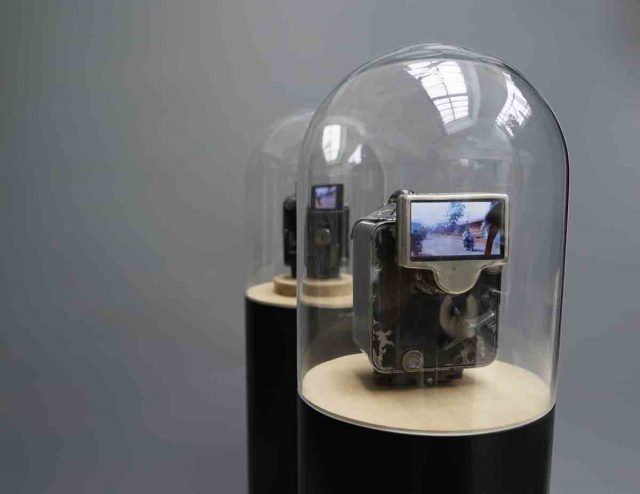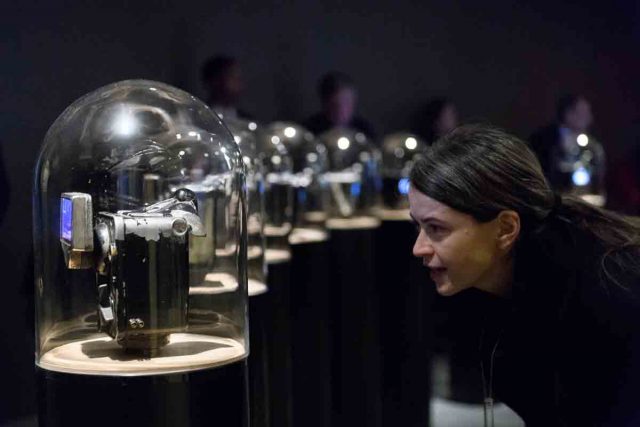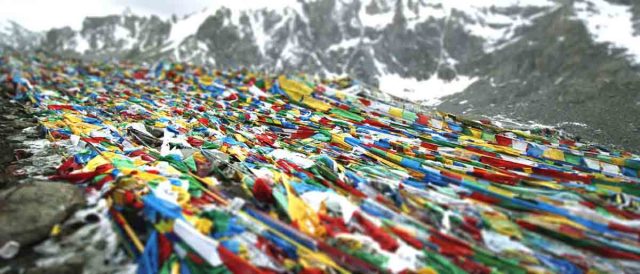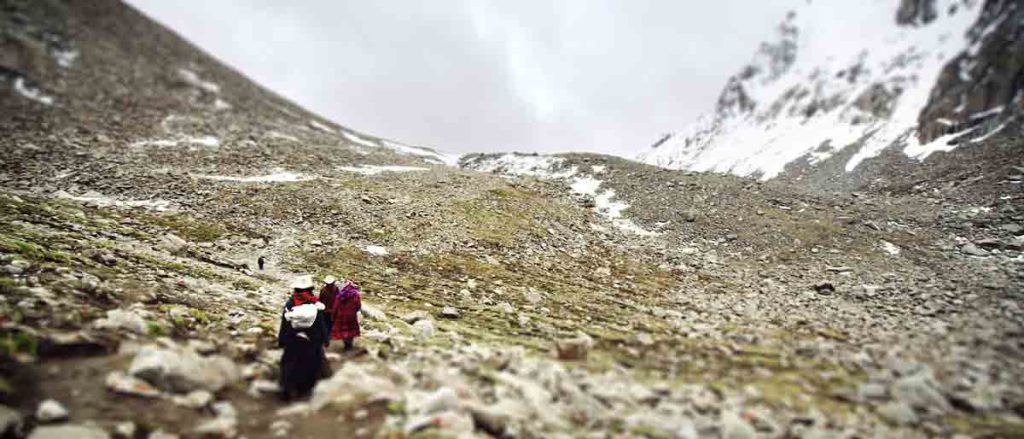What makes a place or an object sacred? How does one engage with and reap the benefits from that quality?
Artists Ghiora Aharoni and Arthur Liou take on these questions in “The Road to . . .,” part of the Rubin Museum of Art’s ongoing “Sacred Spaces” exhibition.
Over the last 12 years, Aharoni has documented his pilgrimages to several holy sites in India. Aharoni’s original inspiration came from the study of Buddhist stupas [large, hemispherical structures that contain relics of the Buddha or Buddhist saints], as well as the way that Buddhist devotees activate these blessed sites through circumambulation.

Aharoni’s artwork at the Rubin, called “The Road to Sanchi,” plays footage from his pilgrimages on screens that are attached to vintage rickshaw meters encased in glass. The art’s semi-spherical layout purposefully invites the viewer to engage in sacredness through their own circumambulation.
“I want the viewer to actually activate the site,” Aharoni said in an interview with Tricycle. “Without people, the installation isn’t active.”
Aharoni’s art captures moments from his travels to Sanchi, the north Indian site of a 3rd-century BCE Buddhist stupa; Varanasi, an ancient epicenter of Indian religions; and two other sites of Hindu, Jewish, and/or Muslim significance. He emphasizes the journey instead of the destinations, and the actual landmarks never appear in the footage.

Aharoni’s sculptures are complemented by Kora, a 14-minute video by digital artist Arthur Liou. The video focuses on the circumambulation, called kora in Tibetan, around the base of Mount Kailash, a Buddhist pilgrimage site in western Tibet. Cold, snowy, windy, and barren, Kora is a slowed-down meditation on the meaning of inner sanctuary amid life’s challenges.
Shot from a first-person perspective, Liou’s intent is for the viewer to experience being at Kailash, a trick that demands what Liou described as the “skill to express the auspicious quality of sacred pilgrimage.”
Liou, who was raised in a Taiwanese Buddhist family but does not identify as a practitioner, told Tricycle that he formed a deeper interest in Tibetan Buddhism after his 4-year-old daughter died in 2007. In 2011, after researching Buddhism and developing a personal vision of pilgrimage, Liou left his hometown in Bloomington, Indiana, and made the arduous journey by plane, automobile, and foot to Kailash.

Liou and Aharoni’s artistic expressions of pilgrimage differ in their end goal.
For Liou, making the film allowed him a “safe place to deal with” the loss of his daughter. The filmmaker described placing a picture of his daughter, stitched onto a Tibetan Buddhist prayer flag, on Mount Kailash, a practice viewed by many traditional Himalayan Buddhists as a way to usher in a favorable rebirth. “That was one of the most emotional experiences of my life,” Liou said.
The crux of Aharoni’s “The Road to Sanchi” is captured in the final sculpture. Gold-leafed and set aside from the arc created by the other eight sculptures, “When All Roads Are One” displays footage from all four of his pilgrimages. Night, day, rural, urban—all settings and times are stitched together in a “mayhem of experiences” to blur the boundaries among the labels that identify us—Buddhist, Christian, Muslim, Jewish, Hindu, and so on.
“We’re all on one path, one pilgrimage,” Aharoni said, “searching for the same divine that I personally find to be within us.”
Aharoni and Liou’s art will be on display in the Rubin Museum’s “Sacred Spaces” exhibition until October 15, 2018. (Liou’s second film, Saga Dawa, which depicts a Buddhist fire ceremony at the foot of Kailash, will replace Kora at the Rubin on May 1.)
Thank you for subscribing to Tricycle! As a nonprofit, we depend on readers like you to keep Buddhist teachings and practices widely available.
